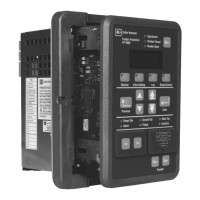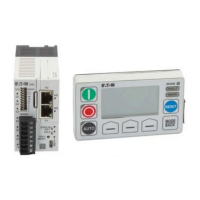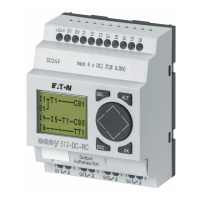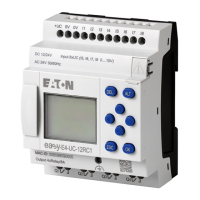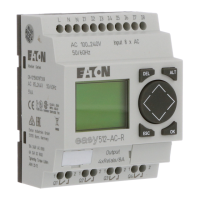Page 90 I.L. 17562
PR 0.3 Effective 8/99
SECTION 9. APPLICATIONS AND SETTINGS
9.0 General — This section is a supplement to Section 5, giving more engineering and
application guidance for particular functions and setpoints.
Use this data in conjunction with Section 5 and Table 4.3, to develop setpoints for the MP-3000,
as well as making appropriate wiring design. Note that particular setpoints are designated as
PnLm, where Pn is the page number and Lm is the line number of the particular setpoint in
Table 4.3, and in the page-line-value scheme of accessing setpoints on the front panel of the
MP-3000.
9.1 Motor Protection — The MP-3000 protects the motor, starter, and load in the following
ways:
• Stator and rotor thermal protection by modeling of heating and cooling effects, including
heating by negative sequence currents.
• Stator overtemperature protection by direct measurement (with optional URTD module).
• Instantaneous overcurrent protection for faults.
• Ground fault protection.
• Phase reversal protection.
• Phase unbalance protection.
• Motor bearing and load bearing temperature protection (with optional URTD module).
• Jam protection.
• Underload protection.
• Incomplete sequence protection (missing status feedback from load).
• Trip-bypass output for failure of contactor to interrupt current after a trip.
9.1.1 Thermal Modeling and Overload Protection without RTDs — Refer to Figure 9.1. The
motor overload protection function, called the I
2
T algorithm, calculates the rotor and stator
temperature based on effective heating current, integrated over time. Positive and negative
sequence current magnitudes are calculated in separate accurate algorithms. The effective
heating current is the sum of the positive and negative sequence currents, with a heavy
weighting factor on the negative sequence contribution. This models the disproportionate rotor
heating effect of the negative sequence current (see Motor Thermal Protection Basics,
Section 8). Certain harmonic currents such as the 5
th
and 11
th
also produce the same heating
effects as fundamental-frequency negative sequence current; this harmonic heating effect is also
measured and modeled.
The temperature rise caused by current flow is modeled with a thermal accumulator or bucket
whose size or capacity is derived from motor nameplate data entered as setpoints. The flow of
effective heating current into the bucket causes it to fill. Cooling is modeled by a gradual
emptying of the bucket. The setpoints which influence the heating and cooling models are:
• Full-load amperes (FLA, P1L1)
• Locked-rotor current (LRC, P2L2)
• Maximum allowable stall or locked-rotor time (LRT, P1L3)
• Ultimate trip current (UTC, P1L4), which is usually service factor times 100 percent.
The MP-3000 thermal bucket fills and proceeds towards a trip only when the effective heating
current is above the ultimate trip current setting, P1L4. The modeling is based on an ambient
temperature of 40 degrees C. A programmable I2T alarm I2TA, P4L2 informs the user when the
bucket reaches the user-set level between 60 percent and 100 percent full.
Without manual process load reduction, automatic process load shedding (see 9.1.5), or other
remedial action after an alarm, the relay eventually trips and displays the message LRC/I2T
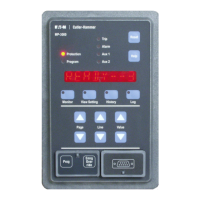
